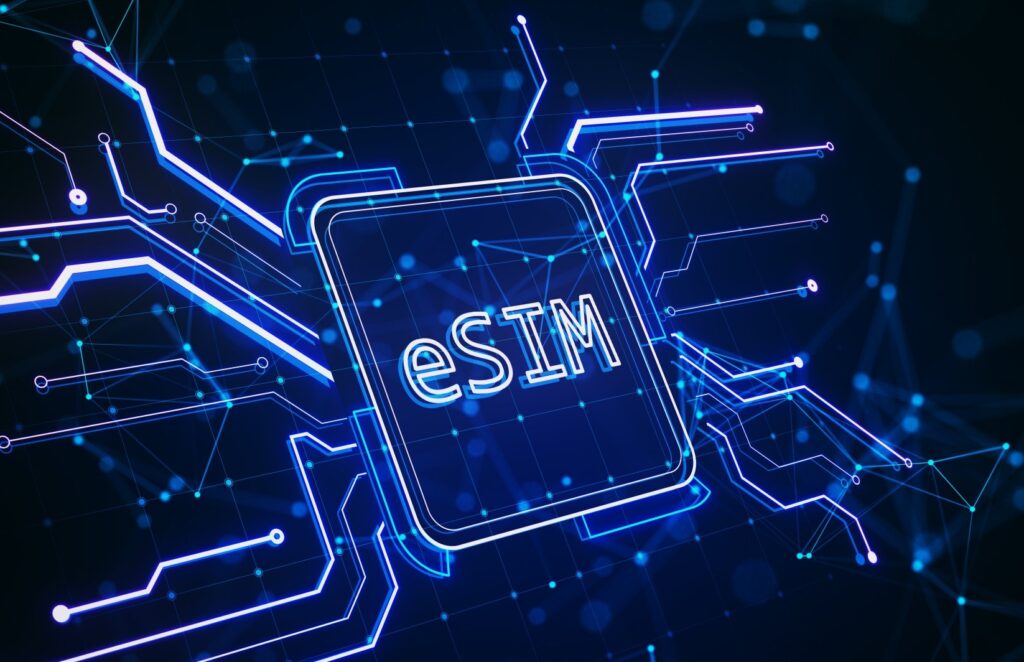Table of Contents
In this epoch of digital progression, the advent of eSIM modules has materialized as a groundbreaking innovation. These gadgets have completely supplanted conventional SIM cards. Nevertheless, the expediency that these eSIMs afford is counterbalanced by a burgeoning apprehension regarding privacy intrusion and the potential for surveillance. Comprehending the intricacies of eSIM security and tracking is paramount for individuals desirous of safeguarding their personal data. This discourse will delve into the complexities of embedded SIM technology, its tracking mechanisms, the attendant privacy quandaries, and efficacious strategies for self-preservation in this digital milieu.

Unraveling the Enigma of Embedded SIMs
So, what constitutes an eSIM? An embedded subscriber identity module, or eSIM, signifies a monumental leap forward from the conventional SIM card. Diverging from the tangible cards inserted into mobile contraptions, an eSIM is inherently integrated within a device’s hardware. This obviates the necessity for a detachable card and empowers users to transition between service providers or plans with mere digital taps. Basically, all you need to do to switch carriers is to find eSIM configurations on your phone and perform a few taps.
How Can Anyone Track My Phone With eSIM?
Well, mobile surveillance can be executed through a multiplicity of methods. They encompass global positioning systems, wireless fidelity networks, and cellular networks. GPS furnishes precise positional data, whereas wireless fidelity networks can monitor devices based on proximity to routers. And cellular networks can track devices by means of cell tower triangulation, a process determining location by measuring signal potency from multiple towers.
![]()
Can eSIM Be Tracked?
The succinct response is affirmative. Although eSIMs themselves are not directly culpable for surveillance, they do interact with network-based and device-based surveillance systems. Network-based surveillance entails utilizing cell tower triangulation to approximate a device’s position. Even though the eSIM technology does not modify the manner in which cell towers track devices, the existence of an eSIM does not nullify this surveillance method. Device-based surveillance is another cause for apprehension. Applications installed on a device may access location services, potentially resulting in the tracking of one’s whereabouts. The nature of eSIMs does not intrinsically alter the capacity of applications to access location data, hence if a phone with an eSIM has location services activated, surveillance via applications remains feasible.
Privacy Apprehensions with Embedded SIMs
One of the privacy quandaries associated with embedded SIMs is the potential for tracking by service providers. Akin to traditional SIM cards, eSIMs permit service providers to amass data on a device’s location and usage patterns. This data accumulation can be exploited for a variety of purposes, encompassing network enhancement or targeted advertising.
Another facet of eSIM security to contemplate is the accessibility third-party applications possess to one’s location data. Applications that solicit location permissions can monitor an individual’s movements irrespective of whether you use a physical SIM or an eSIM. Consequently, while the eSIM itself does not magnify vulnerability, the management of application permissions can influence one’s privacy.
When asking, “Is eSIM safer than traditional SIM cards?”, it is imperative to acknowledge that both technologies present comparable levels of exposure to tracking. The fundamental distinction resides in the managerial convenience afforded by eSIMs, rather than an augmented or diminished privacy risk.
Legal & Regulatory Ramifications Concerning eSIM Security
In numerous jurisdictions, laws and regulations have been enacted to safeguard user privacy and circumscribe tracking. For instance, the General Data Protection Regulation, or GDPR, within the European Union imposes stringent guidelines on data accumulation and user acquiescence. Such enactments pertain to all forms of mobile technology, including embedded SIMs, ensuring adherence to privacy benchmarks by carriers and application developers.
Individuals possess entitlements concerning surveillance and data sharing, encompassing the right to be informed about data collection practices and to consent to or decline specific types of data sharing. Comprehending these entitlements can empower users to make informed judgments about their privacy.
The GDPR and analogous privacy laws influence the utilization and oversight of eSIM security. These laws mandate that users be furnished with lucid information about data usage and be granted control over their personal data. This regulatory framework applies uniformly to eSIMs, guaranteeing that users of eSIM-equipped phones benefit from robust privacy safeguards.
How to Enhance eSIM Security Methods
Despite the perceived security of embedded SIMs, you may employ certain stratagems to mitigate surveillance risks. You may undertake four straightforward actions to shield your personal data stored within a mobile device:
- Modifying privacy configurations. Scrutinizing and adjusting a device’s privacy parameters to curtail application access to location data is imperative.
- Utilizing virtual private networks and secure applications. A virtual private network can obscure one’s location and encrypt internet traffic, thereby erecting an additional layer of privacy. With the help of these services it would be practically impossible to track your phone with eSIM accounts.
- Exercising vigilance over application permissions. Regularly examining and managing application permissions ensures that only trusted applications possess access to location data. Selecting a prudent service provider.
- Choosing a carrier with robust privacy policies can fortify eSIM security. Carriers distinguished by transparent practices and a dedication to user privacy are optimal for minimizing surveillance risks.
In summation, these uncomplicated actions can substantially diminish the hazard of exploiting an embedded SIM. By adhering to this guidance, one can alleviate apprehension regarding data breaches or theft.
Concluding Thoughts on eSIM Security Protocols
In essence, if you’re still wondering “Is eSIM safe?”, the answer is yes. You can use the technology without being afraid that your someone will steal your data. However, if you’re worried about the safety of your personal details, you can use VPN services and just toggle down all the tracking services. These actions are simple, yet they will protect you from any problems associated with monitoring your location and data.





